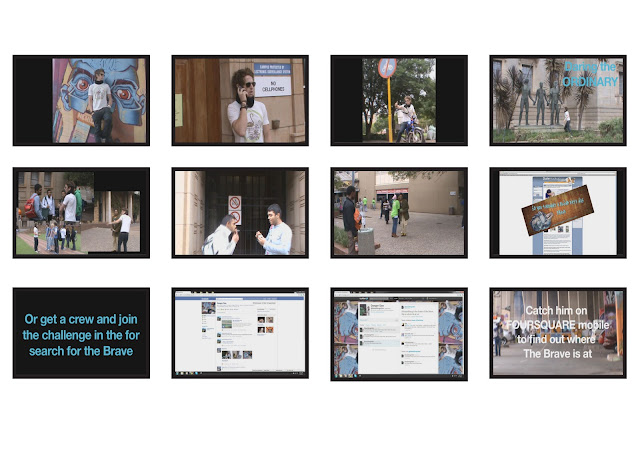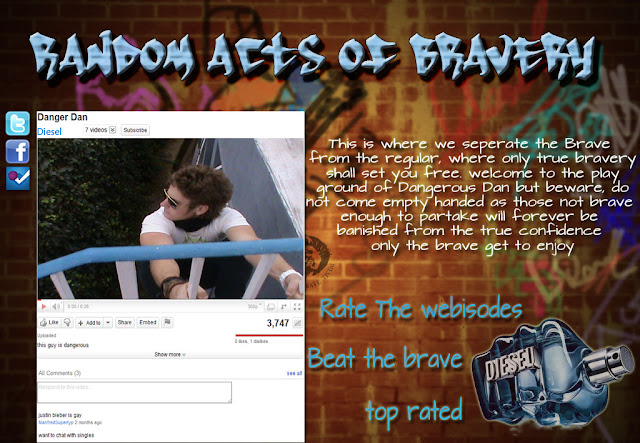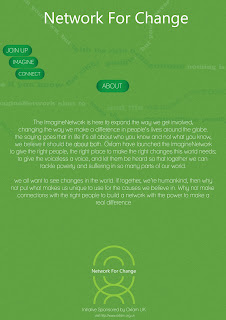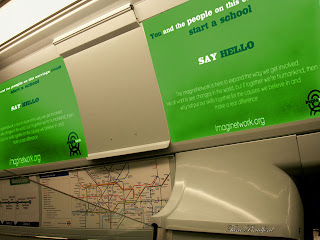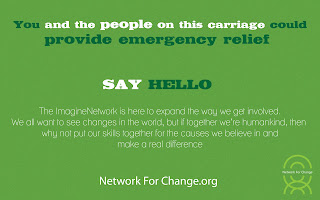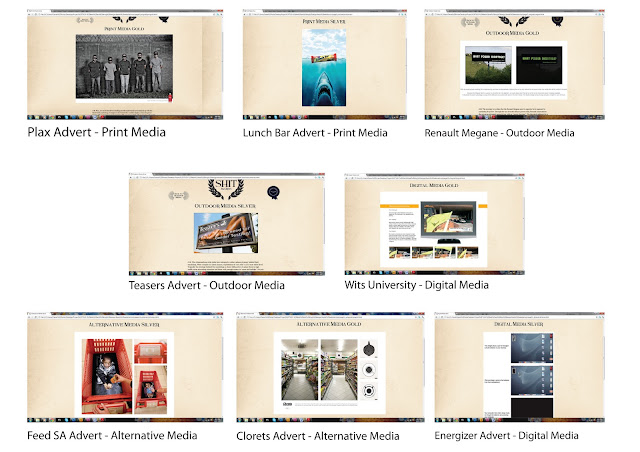2nd Year Work - Jozi'Khaya
Jozi’khaya
Brief
Johannesburg, the calabash of culture, the melting pot of dreams, hopes, and aspirations. The city of gold is alive with every heart-beat of its inhabitants, but what makes Joburg a unique city amongst others around the globe lies in the details. The intricacy of the lingo, the various forms of communication in which the city’s dwellers commute, inform and deceive. The 12th unofficial language that binds the variety of cultures in this bustling urban jungle; the language of signs.
The taxi taal, used by every Jozi commuter; an original form of communicating a destination between driver and passenger without the need for a sign-post or spoken word. Significant hand gestures displaying one’s desired location, “The Gun”, “The one-two”, and the ”sho’t left”. These minute aspects of life in Johannesburg are the essence of its unique culture.
The vendor taal, the unique system of coded words and warnings used by the city’s many illegal vendors of pirated and stolen goods. A name, a number or a hand signal employed by the underground community of illegal hawkers to warn each other of police presence and ambush.
Additionally, there is the tsotsi taal; the signs and symbols that form the devious communication between thieves used to relay techniques of trespassing to each other. Different coloured objects and symbols are being used by house thieves and gangsters to determine the levels of resistance they will encounter during a break-in.
Jozi’Khaya is the voice of the underground. The voice box to the heart beat
That breaths life into Jozi’s every day. The first of three projects to be launched is called “Victims of Colour”, and deals specifically with aiming to inform the public about the colour scheme being used by house thieves and gangsters. What Jozi’Khaya seeks is the definitive platforms to launch this original and unique project. Jozi’Khaya would like you to create a media campaign across the various media and multimedia platforms to create awareness about this project.
THE BIG IDEA – CONCEPT AND CREATIVE RATIONALE
Johannesburg is many things; a home, a hub, a capital. When we reflect on the essence of this city of gold we look back on history filled with turmoil and anguish. Yet as we move forward into a bright future the citizens of Johannesburg can look at one another and know that this progress has not been an individual task. We have worked as a team, as a nation to eradicate all that is holding us back. The journey has only begun.
The Jozi’khaya brief required a multi-platform campaign with which to launch a community based awareness project aimed at informing the public of the devious tactics and strategies being employed by criminals in burglaries. Gangsters and house thieves are making use of a subtle system of coloured objects and signs to relay information to one another about a specific property. These various colours signify the diverse levels of resistance burglars can expect to receive upon breaking and entering. Although many objects are used for colour, certain items are used for their recognisability. These items are red coke cans, green crème soda cans, white milk bottles and blue graffiti tags.
Perhaps the best way to inform the public of these symbols was to make use of the already recognizable objects in their marketing environment. In other words, why make your own red billboard about coke cans, when you can use existing coke billboards, or trucks in this case (trucks mobility is more useful). And so the media campaign formed upon that platform using the coke trucks and fabricated milk adverts. Additional alternative media contact points were used for some of the other colours such as the green crème soda cans. Decals of green colour and print were placed on cold-drink fridges around the crème soda stack with copy to engage the consumer’s awareness. The same decals were used for the milk fridges and coca-cola cans.
The TV and radio adverts are more straight cut because the message is a serious and straight forward message that requires plain communication to deliver its significance. The TV ad was written for black and white 3D animation to accentuate the colour of the lunchboxes in addition to adding an element of playfulness for the masses to relate to.
The project culminates in the website and all the media contact points relate back to the project web page where all the information is laid out in an interactive way explaining the entire project, Jozi’Khaya, and their goals for the future. The website encourages users to get involved in the project by posting and uploading pictures and reports of criminal tactics and updates on how to maintain public awareness and safety.
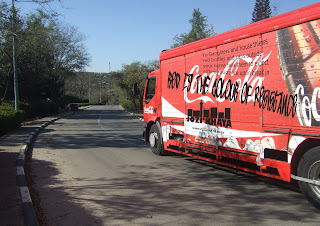 |
| Print Media (Alternative) |
 |
| Print Media (Street Posters) |
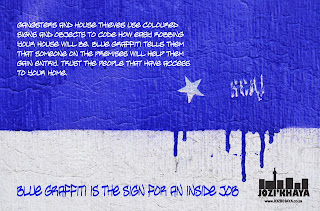 |
| Print Media (Street Posters) |
Advertorial: The Caxton
Newspapers of Johannesburg
WEAPONS OF COLOUR
By Martin Prinsloo
Taxi hooters, police bribes and gold mines are just a
number of associations that are made with the city of gold, Johannesburg. But perhaps, the single most
epitomising character of this city is the long running
unfortunate history of crime. It shares a rather dishonorable podium place just
behind Rio de Janeiro
as the most dangerous place on earth to live. With statistics that would make even
Chuck Norris weak at the knees, us Joburgers
are no strangers to the crime scene.
Cautiously, we watch every street corner as we pull in
and out of our drive ways. Locking doors and closing windows at intersections;
Joburg’s inhabitants might seem a paranoid bunch. However, if we consider that
in Johannesburg
you have either been a victim or know someone who has been a victim of more
crimes than most have ever heard of, one can understand the caution.
A drive through suburban Johannesburg might reveal certain ways of
living that its citizens have come to live by, the architecture of fear. Fort-like
barricades of brick and paint topped by high voltage electric fencing make the
houses of these areas sound like Fort-Knox. And indeed they need to be if they
are to defend against the notorious house robberies of the suburbs. For those
who live in the gated communities and townhouses, life is a little easier on
the stress levels - as far crime is concerned. Additionally, round the clock
armed protection also might help more than a few, sleep a lot better at night.
I drive to work through the northern suburbs, through areas where houses are
being built with a seemingly prefabricated guard house attached to the gate. On
the other hand, for the citizens of Joburg who live in the suburb areas, where
a boom would create an overall mess of the ebb and flow of the streets and
avenues, such protective measures are not a ‘viable’ option. Yet, crime in Johannesburg manages to
snake its way through even the best defenses. With most of the reported crime
in the city taking place in the rural areas and townships, the residential
areas have seen the brunt of property crimes and burglaries with criminals in
search of greater loots.
So what measures does the government take against all
these statistics. Aside from attempting to hide them – as they did back in
January of 2009, the government has launched many campaigns to combat crime.
The local Johannesburg government even went out
of their way to outsource the aid of fellow politician and former mayor of New York to take hold of
eGoli’s crime issue. Rudolph Giuliani,
former NYC mayor is no stranger to crime either, yet something interests about
the thought of how daunting this out-of-towner’s task is going to be. These
initiatives, such as the employment of 15,000 additional policemen in Johannesburg alone, have
inspired the communities to take charge of the situation. This resulted in the
spawning of non-profitable private security companies such as GAP and CORE all
over the northern suburbs.
Sure these companies have made a change in the areas
they were placed. Some of these security companies managed to reduce
house-robberies and armed contact crimes by an average of 75% in two years of
operation. Yet the question still arises, why is there still so much crime
infiltrating areas with such high levels of security, one could mistake it for
a presidential zip code. The answer to this mystery that baffles even the
wittiest of crime detectives lies in the details, the ways which gangsters and
house thieves communicate and operate. In order to get passed the
aforementioned military details, these criminals have been forced to come up
with smarter and more devious tactics. Criminals with a specific taste for
house robbery have begun to use coloured signs
and objects in their surveillance and burglar tactics. A recent investigation
into a wave of suburban house robberies found that thieves are using a system
of coloured signals to notify one
another of the information gathered about the specific residence. Although many
different objects are being used for these purposes by the gangsters and house
thieves, specific objects are becoming more common in trait. Reports of the
system being used for house robberies have been showing up across the map of
suburban Johannesburg
and even reaching out into further industrial areas. These police reports claim
that certain colours denote property owners’
abilities to resist break-in and theft.
Additionally, each coloured
object is usually a piece of general litter found on the streets, strategically
placed outside the house. White objects such as milk bottles indicate easy
targets. Blue plastics or graffiti usually notifies of an inside job. Green
cans such as Crème Soda signify unattended property. Red coke cans warn to
expect armed resistance. Often, the object will not be visible from plain site
and only the intended eyes will know where to look. This ploy makes certain
that the victim will be none-the-wiser and raise the chance of surprise and
ambush. Information such as this might instill some level of fear amongst most
suburb dwellers, thus giving us more than just peaking around our street
corners to do. Awareness should be raised about such criminal tactics, and low
and behold it has been. And in damn good fashion ill say.
JOZI’KHAYA is the voice of the underground, an upfront
review on the heartbeat of Jozi, the
life that makes this city tick. Jozi’khaya is on a mission to publish and
inform the public on the signs of Joburg. This project has taken on three signs
that are unique to Johannesburg;
the taxi taal, the vendor taal (used by illegal vendors to warn of
police ambush), and last but by no means least the tsotsi taal. The first of the three projects that have been launched is
called “Victims of Colour” and deals specifically with aiming to inform the
public about the colour scheme being used by house thieves and gangsters.
Perhaps you’ve seen some of their guerilla style advertising on Coca-Cola
trucks or on mock milk adverts around town, or maybe you’ve encountered some of
the more elusive messages at supermarkets buying Crème Soda. Their message is
strong, their intention is to inform.
In conclusion, we Joburgers are not really a paranoid
bunch after all. We’re just a little more careful and cautious
than most, I suppose you have to be in a place where a milk bottle labels you
an easy target.
The entire Jozi’Khaya – Victims of
Colour campaign can be found on their website at
http://www.jozikhaya.co.za
Radio Spot: 45
seconds
Client:
Jozi’Khaya
“Colours” Audio
(Andy Mckee – I’ll be over you)
The opening sequence of the ad is to sound like a customer testimonial
VO: When asked what colour people thought they might be, this is what
they said
SFX: General shopping mall ambience
FV1: (an older black lady) Ey, I must be a white *chuckles*
MV1: (middle-aged coloured man) I hate to say it but I’d go with green
FV2: (middle-aged upper class white lady) oh blue without a doubt
MV2: (Afrikaans middle-aged male) definitely a red my china.
VO: Colour is not a thing of the past. Coloured objects are used by
gangsters and house thieves to mark your household and determine your ability
to resist a break-in.
Some of the objects such as white milk bottles show easy targets, where
as red cans show those with armed force.
VO: know the signs, don’t be a victim of colour
Sponsorship Tag &
Tail: “702 eyewitness news is proudly bought to you by the Jozi’Khaya victims
of colour project – know the signs, don’t fall victim.
TV Script: 40 second TV spot
Client : Jozi’khaya
“Bullies”
The theme of the Jozi’khaya “victims of colour” project is to inform the
public of the potential dangers of how colour is used by gangs to mark your
household as well as your ability to defend against break-ins and house
robberies. The colours denote the various levels of resistance fellow gang
members can expect to be confronted with during the break-in.
(Audio: Justice – Genesis)
The ad is a black and white animation – 3D style, and opens in a large
primary school playground where the entire school is out at break. Our
attention is becomes focused on a section of the playground where we see a
group of typical looking 7th grade bullies approach a little girl
sitting alone with a white lunch box. Towering over the frightened girl, the
bullies simultaneously lend an intimidating look at the girl as if to coax her
into handing over her possessions, the white
lunch box in this case. The frightened girl does so submissively.
Narration: 1st
scene
Coloured objects are used by gangsters and house thieves to mark your
household and determine your ability to resist a break-in. To gangsters and
house thieves, white means that you are an easy target.
The shot cuts to a camera angle following a mischievous and ‘dodgy’
looking trio of 5th graders as they approach two friends, a boy and
a girl, sitting together on the playground bench. We watch in shock as the girl
betrays her friend as she tricks him into looking the other way while trading off
his blue lunchbox in exchange for
coins from the ‘dodgy’ trio.
Narration: 2nd scene
To gangsters and house thieves, blue means they have someone on the
inside to assist.
The third scene plays out in a quick fashion almost mimicking a quick
paced suspense-thriller-style hip shot following the thief as they swiftly walk
passed and swipe a green lunchbox off
the bench that is noticeably unattended. Whilst in the background we see the
other children all playing unwitting of the crime that lurks amongst them.
Narration: 3rd scene
To gangsters and house thieves, green says the coast is all clear.
(Audio: the music breaks
as the young boys friends stand behind him)
The fourth and final shot is a scene where the bullies we see in the
first scene are walking up to a group of younger boys. The ringleader of the
bullies, the tallest one of the group, taps the smallest boy in the younger crowd
and demands the boy’s red lunchbox to
which the small boy rather aggressively refuses and when the bully moves
forward to intimidate the young boy (song breaks) his four friends approach the
bully in order to defend him resulting in the bully’s backing down.
Narration: 4th
scene
To gangsters and house thieves, red is the colour of resistance and
sends the warning to expect armed confrontation. As the screen fades the
narrator leads out with the tagline; “Know the signs, don’t fall victim”
As the images blur and fade out on screen the Jozi’Khaya logo appears as
well as the slogan “Victims of Colour” above the tagline; “Know the signs, don’t
fall victim” as well as the web address http://www.jozi’khaya.co.za
Website Copy
The opening page of the website will consist of the logo and art work
making the logo appear to be graffitied onto a brick wall. On the wall above
the logo is written “Jozi’khaya is the voice box to the heart beat of Jozi”
This action is followed by an animation of two graffiti artists spraying the
words “Victims of Colour” underneath the Jozi’Khaya logo. The jozi’khaya
website is an interactive one and the elements of the website engage with the
viewer. Clicking on the “Victims of Colour” heading, takes us to the next page
which is the home of the project.
The introductory copy on the ‘Victims of Colour’ home page reads as
follows:
Our message is Strong. Our intention is to Inform.
Jozi’khaya is the voice of the underground. The voice box to the heart
beat
That breaths life into Jozi’s every day. Watching the form of how the
city communicates through systems and codes – eliminating the need for language
and therefore preventing misunderstanding – is like watching a well oiled
machine at work. Johannesburg
is the city of dreams and aspirations, life is bursting at the seams.
However, Johannesburg
has a dark chord running through its notes. Danger lurks beneath the shimmering
city lights. As many Joburg citizens know, crime is an unfortunate part of life
here that has left everybody living life on a knife’s edge. The city dwellers
must fend for themselves taking charge of their own protection and becoming
more alert in their surroundings.
The Jozi’Khaya ‘Victims of Colour’ project aims to help keep our
communities aware. By creating platforms from which to launch these messages
about criminal tactics affecting our homes, Jozi’Khaya is raising levels of
awareness and caution helping citizens to recognize the crime before it
happens.
Links on home page:
Home
Victims of Colour project
Gallery
Interact
Media
Contact us
Link – Victims of Colour
Project
The Jozi’khaya team has gone out into the city and has used the colours
of our surroundings to raise awareness around the coloured objects being used
by house thieves and gangsters to determine the levels of resistance they will
encounter during a break-in.
Although there are many coloured objects that are used in this scheme,
certain objects are being used more commonly. These objects are white milk
bottles, blue plastics and graffiti, green crème soda cans and red coke cans.
Each colour denotes a different level of resistance:
White – these objects are used to mark the easy targets
Blue – usually used as a graffiti tag, this colour informs other
criminals
that someone on the
premises will help them gain entry
Green – crème soda cans are used to mark the house as clear, the go sign
Red – coke cans are used by criminals to warn each other
of the houses where
armed resistance is to be expected upon entry.
Check out the Gallery to have
a look at some of the projects placed around town by the Jozi’Khaya.
Link – Gallery
Welcome to the Victims of Colour gallery:
These are the various projects, print adverts, billboards and posters.
(‘The making of Jozi’khaya’ video is found in the gallery. This video is
a home-made style film of the entire project and the journey through the city
marking the trucks and posters.)
Link – Interactive
Ubuntu is the theme of our nation and the message is clear, we need to
help each other to move forward. The interactive project encourages the
community to post pictures and messages to warn one another of new reports and
crime tactics, to help maintain awareness and protect each other.
Link – Media
These are the media scripts used in TV and Radio for the Jozi’Khaya
project



